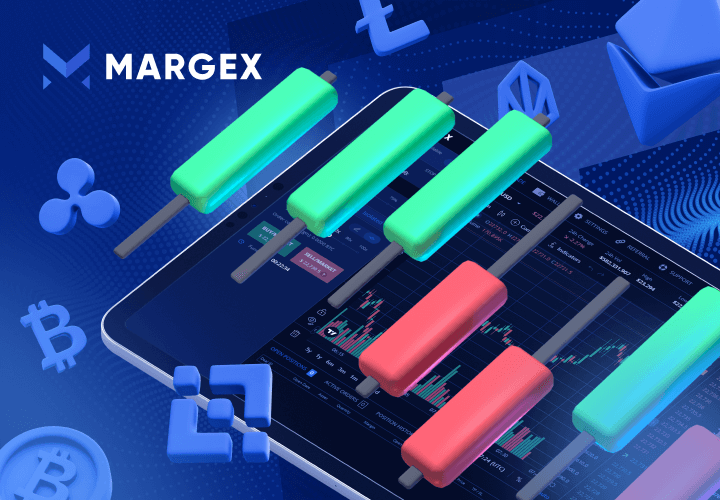Buying and selling stocks, commodities, or currencies across different marketplaces to take advantage of small but consistent price disparities is the classic definition of arbitrage.
Yet, the term "arbitrage" is sometimes used to refer to other types of trade. One common investment tactic among hedge funds is called "merger arbitrage," which is purchasing shares of a company before a merger is officially announced or widely anticipated.
Arbitrage is the simultaneous buying and selling of the same asset in multiple marketplaces to benefit from minor price fluctuations. It takes advantage of short-term price fluctuations in the same or comparable financial products traded in numerous marketplaces or different formats. Arbitrage emerges as a consequence of market inefficiencies, exploiting and addressing such inefficiencies.
With technological developments, profiting from market price mistakes has become exceedingly difficult. Many traders use automated trading systems to track changes in related financial instruments. Inefficient price settings are addressed promptly, and the opportunity is frequently destroyed in seconds. This article will provide a guide to arbitrage trading in crypto.
What Exactly Is Crypto Arbitrage Trading?
Before the advent of the cryptocurrency market, arbitrage was already a prominent feature of traditional financial markets. Despite this, there seems to be a more wonderful buzz in the crypto industry regarding the likelihood of arbitrage opportunities.
Arbitrage in crypto refers to a system whereby you take advantage of the disparity in the price of an asset on two or more exchanges for profits. This means buying low on one exchange and selling at a higher price.
The bitcoin market's reputation for high volatility relative to other financial requirements is likely to blame. Because of this, the value of a cryptocurrency may fluctuate widely over time. Arbitrageurs have many more opportunities to find profitable price disparities in crypto assets since they are traded globally across hundreds of exchanges around the clock.
To participate in arbitrage is to trade to benefit from insignificant price variations between identical assets traded on various exchanges. An arbitrage trader acquires an item in one market and sells it in another to benefit from the price differential. There are more nuanced variants of this problem, but they all rest on the capacity to recognize market "inefficiencies."
Crypto arbitrage traders, often known as "arbitrageurs," typically work for central banks and other financial organizations. Trading enormous quantities of money need complex algorithms that discover and capitalize on possibilities appearing in milliseconds.
What are a few examples of arbitrage?
The different markets in which this strategy can be carried out are:
- Markets located in different places: For example, arbitrage between Frankfurt, Madrid, or Chicago.
- Different types of markets: For example, derivatives markets and spot markets.
Arbitrage operations tend to regulate the markets since selling in the market with a higher price generates an increase in supply that causes the price to fall. When buying in the market with a lower price, they generate an increase in demand that makes the price increases ( law of supply and demand ).
This rise and fall in price continue until the moment when it is no longer profitable to do this type of operation. That is when both markets' prices are equal and, therefore in equilibrium.
How Does Crypto Arbitrage Trading Work?
Using Bitcoin and Ethereum as examples, these possibilities regularly arise due to a significant increase in trade volumes or exchange inefficiencies.
More significantly, established exchanges often provide better pricing that is more in line with the real-time trading values of crypto assets. Automated market makers have also aided in this process. On the other hand, prices on smaller exchanges may be higher or lower due to inefficiencies within the trade. Thus, the notion of crypto arbitrage trading aims to capitalize on the flaws of the crypto markets.
The liquidity and trading volumes posted on exchanges are two significant elements that influence exchange pricing. The greater the amount of a crypto asset traded on a business, the smaller the deviation from its actual price. On the contrary, crypto asset values tend to be higher in smaller firms with little liquidity. Various instruments, like liquidity pools, offer crypto liquidity services to aid in trading.
To make money off a digital asset's price difference on two or more exchanges, a trader would have to identify the price difference and then execute a series of trades.
Let's say that the price of one bitcoin is $45,000 on a couple of different crypto exchanges and $45,200 on Margex. For example, crypto arbitrage traders may see a $200 price differential between Coinbase and Margex and decide to buy bitcoin on Coinbase before selling it on Margex. This is an example of a typical crypto arbitrage trade.
For example, the following is a market trade of BTC;

There are two kinds of crypto arbitrage trading:
Arbitrage across exchanges (also known as triangle arbitrage): A notable example of triangular arbitrage is the Bitcoin-Zipmex transaction. Because cryptocurrency may be quickly exchanged across a blockchain network, arbitrage possibilities between exchanges are common.
Arbitrage inside the exchange: To do this, you must acquire two separate crypto assets, such as Bitcoin (BTC) and Ethereum (ETH), from the same business and sell them when there is a price difference.
Cross-border arbitrage entails purchasing and selling cryptocurrency on two exchanges in separate jurisdictions.
Why Do Market Opportunities For Cryptocurrency Arbitrage Exist?
As was previously said, there are hundreds of exchanges throughout the globe where cryptocurrencies are exchanged. They are traded in significant cryptocurrencies in addition to other fiat currencies.Arbitrage possibilities between markets may arise for several reasons.
Sudden changes in the prices
In retrospect, it is clear that cryptocurrency prices are very volatile. On the same day, prices may go down by 20% and up by the same amount. Traders who place orders manually may not always be able to cancel them.
Furthermore, some may exhibit slower or faster responses to these price moves due to liquidity disparities across cryptocurrency exchanges. For instance, if cryptocurrency prices began falling, market orders on an illiquid exchange would lead prices to fall, even more, thus creating arbitrage possibilities.
Additionally, an exchange that has high liquidity will be able to maintain the current value of a cryptocurrency. This is because the constant demand and supply on its platform make it easy for the price to remain stable. However the opposite, occurs with an exchange with low liquidity as the price is likely to rise or fall due to demand.
Local restrictions imposed to fiat currency transfers
Some nations limit the movement of funds out of their borders, preventing local cryptocurrency investors from accessing cryptocurrency marketplaces beyond their borders. This generates supply and demand mismatches in local bitcoin exchanges.
Kimchi Premium is the most well-known example of this predicament. In South Korea, cryptocurrency investors face strict capital controls, and international investors are prohibited from trading on local cryptocurrency exchanges. As a result, bitcoin values in the nation differ from those in other cryptocurrency exchanges.
The price of Bitcoin is usually higher in South Korea than in other countries, a phenomenon known among cryptocurrency investors as the 'Kimchi Premium.'
Transaction and transfer costs
Price discrepancies may still emerge owing to transaction costs even in a limitless and low-volatility market. You could think that the mere existence of pricing differences does not guarantee the presence of an arbitrage opportunity. Contrarily, not every Bitcoin trade is the same.
High-volume traders may save a lot of money on bitcoin exchange transaction fees. Thus, they would have some limited arbitrage opportunities resulting from these price differences. Furthermore, the location of an exchange could also play a role in the price of an asset. In countries with higher demand, the price of the cryptocurrency will tend to rise while the contrary occurs in regions with low demand.
Arbitrage Opportunities In The Cryptocurrency Market: Types
There are several prospects in this sector due to all of the features, flexibilities, and innovations that have come with cryptocurrency. This section will teach you how to make risk-free gains in the bitcoin market.
Interest rate arbitrage
This unique form of arbitrage takes advantage of lending and borrowing rates on different cryptocurrency exchanges. Most cryptocurrency exchanges allow users to borrow and lend their assets for rewards.
The interest rates are determined by the supply and demand of users who utilize these services. As a result, you can monitor the lending rates, borrow lower from one exchange, and lend at a higher rate for a risk-free return.
For example, you might borrow BTC from Margex for 0.17% (or make an order and wait for a lower rate) and lend it at 0.88% on FTX.

To borrow BTC from a platform such as Margex, you must have fiat cash or other acceptable cryptocurrencies as collateral.
Alternatively, you may benefit from arbitrage by borrowing/lending fiat cash. Here is a fiat currency interest rate arbitrage opportunity:
As you can see, borrowing USD at 1.50% from FTX and lending at 3.61% (or putting an order at a higher rate and waiting for it to be fulfilled) on Bitfinex may result in a risk-free profit.
To take advantage of this offer, you must either be able to transfer fiat cash from FTX to Margex or already have fiat currency in Margex.
Please remember that to borrow fiat cash, you must have cryptocurrency in your account that may be used as collateral.
Pure spot arbitrage
This form of arbitrage involves purchasing a cryptocurrency from one exchange and selling it at a higher price on another exchange. To understand how it works, let’s look at the illustration below, which shows the real-time difference between two exchanges.

A BTC/USD chart from another crypto exchange platform

A BTC/USD chart from the Margex platform
As you can see, one can benefit by taking advantage of the arbitrage opportunity by purchasing BTC from the first exchange and selling on Margex.
To take advantage of this opportunity, you’ll need to hold USDT on one exchange and BTC on the other and sell them simultaneously. This is because this arbitrage occurs for abrief period and delaying could be costly.
BTC is volatile, and a significant market change could lead to losses after selling on the second exchange. So the best way to leverage this opportunity is to purchase BTC with USDT and selling BTC instantly on the second exchange. This helps you to make profit from the spread depending on the market condition.
Because of varying transaction costs, pure spot arbitrage can be risky and ideal for traders using exchanges with extremely cheap transaction costs. These exchanges are usually the biggest since they tend to have high liquidity and traffic for trades.
Margex offers a great option as it is a top crypto platform that is highly liquid and supports seamless trading. Also, keep in mind that these possibilities have arisen while market volatility is minimal. Such arbitrage possibilities may exist during highly volatile periods, from which everyone may gain.
Positional arbitrage
In positional arbitrage, there’s no physical transfer of stablecoins or volatile coins, and it uses the underlying theory behind pure spot arbitrage. In this case, you leverage arbitrage opportunities by establishing different positions on different exchanges.
Profit is achieved when the asset price converges to the target set on the established positions. Let’s assume that you’re trading Bitcoin in the futures market. You can open a position and go long while opening another position on a different exchange.
Once the prices converge to a similar level, you terminate both positions. This way, the profit earned from the first exchange would be higher than the other exchange since you took opposing. positions which converged to the same price levels.
The price risk of owning a cryptocurrency is avoided while engaging in arbitrage since no cryptocurrency funds need to be held on the exchanges. To trade on any platform, you need to possess a stablecoin.
Classification And Types Of Crypto Arbitrage Trading Strategies
Traders may employ several sorts of crypto arbitrage trading tactics to profit from price differences in the market. Among them are the following:
Cross-exchange arbitrage
The trader purchases a crypto asset on one exchange and instantly sells it on another market where the price is more outstanding. This is feasible because asset values might differ from one business to the next. The trader must have accounts on both exchanges and be ready to capitalize on the price differential.
Spatial arbitrage
This entails buying and selling cryptocurrencies in various locations worldwide to profit. Japan, which has a significantly greater demand for bitcoin than most other nations, is one example of a country where this may be successful. You may generate a profit while avoiding the dangers associated with investing in cryptocurrencies outside of Japan by purchasing and selling bitcoin in Japan.
Triangular arbitrage
Triangular arbitrage is a crypto arbitrage trading in which the price of one digital asset is used to bet on the cost of another. This method may be utilized to gain money by exchanging one item for another and then selling the second asset for a more excellent price. The objective is to benefit from the price differential between the two assets.
Decentralized arbitrage
This arbitrage opportunity is widespread on decentralized exchanges or automated market makers (AMMs), which use automated and decentralized algorithms known as smart contracts to determine the price of crypto trading pairs. Arbitrage traders may rush in and conduct cross-exchange deals between the decentralized and a centralized exchange if the costs of crypto trading pairs diverge considerably from their current values on centralized exchanges.
This form of arbitrage has become very popular due to the recent boom in DeFi and the availability of different DeFi platforms. Users can explore the price disparity and complete arbitrage trades without the need for a third-party or centralized exchange.
Statistical arbitrage
This method integrates econometric, statistical, and computational methods for large-scale crypto arbitrage trading. High-frequency arbitrage is a trading strategy in which traders employ mathematical models and trading robots to make the most profitable transactions possible. Trading bots are preprogrammed with computer-based trading algorithms that may place several transactions in a short period of time. This form of arbitrage is employed by investment and top trading companies looking to have an edge.
The Benefits Of Cryptocurrency Arbitrage
Arbitrage trading in cryptocurrencies offers certain benefits not seen in other markets.
To begin, the dangers of engaging in crypto arbitrage trading are minimal. The risk is minimal, with no open position and a focus on simultaneous price disparities across bitcoin exchanges. Second, the price differential might occur when prices go up or down, so you can earn money either way.
In addition, the time it takes to get a return on your investment is relatively short. Convergence in price occurs quickly, so even if you seize a positional arbitrage opportunity, you won't have to wait long to close your long and short positions.
You should however, note that great arbitrage opportunities don’t come everyday and good investors always make extensive research. Some of these include paying attention to different order books of tens of exchanges to find opportunities.
The Downsides Of Cryptocurrency Arbitrage
Cryptocurrency arbitrage trading has significant downsides that you should be aware of before you begin trading.
Requires large capital
To begin, part of your assets must be held in cryptocurrency. To benefit from simultaneous arbitrage, you must sell the cryptocurrency when you acquire it. To be able to borrow fiat money for interest-rate arbitrage, you must have cryptocurrencies.
Requires efficient trading bots
Second, to capture spot or positional arbitrage opportunities, you must have a well-functioning trading bot that monitors the prices of all cryptocurrencies across cryptocurrency exchanges, the funds in wallets, and the interest rates offered for borrowing and lending on these exchanges.
Regulations concerns
Furthermore, moving fiat cash to numerous cryptocurrency exchanges might be challenging due to local government regulations. Cross-border arbitrage can also be hampered by security regulations (identity verification). There are strict requirements where an operator can operate a service. This can make it difficult to take advantage of opportunities in exchanges outside your jurisdiction.
High exposure to volatile market movement
There are greater chances during highly volatile periods, as history has shown, certain exchanges tend to collapse due to congestion.
As a result, your trading bot may be able to purchase on one exchange but not sell on another owing to a hypothetical market collapse, or vice versa. As you would have open positions and the market may exhibit a quick surge or decline, this could result in severe losses.





